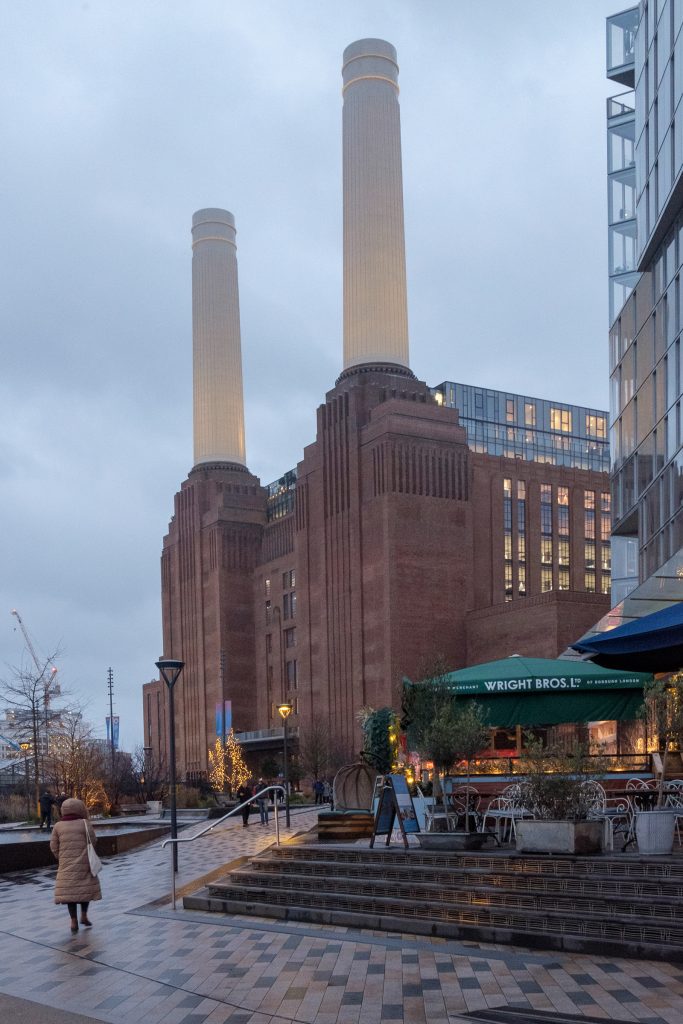
Last Tuesday – 10th January 2023 – I went for a walk with a couple of friends, both photographers. The pictures here were all taken by me on our walk. We met at Tate Britain where the exhibition on Bill Brandt was entering its last few days – it finishes tomorrow, 15th January. We hadn’t bothered to go before as all three of us were very familiar with Brandt’s work – and had seen previous and larger and better exhibitions. I think both the others had heard him talking about his work, we had all watched him on film and all owned several of his books, had in various ways studied his work and taught about it. I’d also published some short pieces about him when I wrote about photography for a living. We didn’t really feel a need to go to another show, but it was free and it fitted in with a couple of other things we wanted to do.
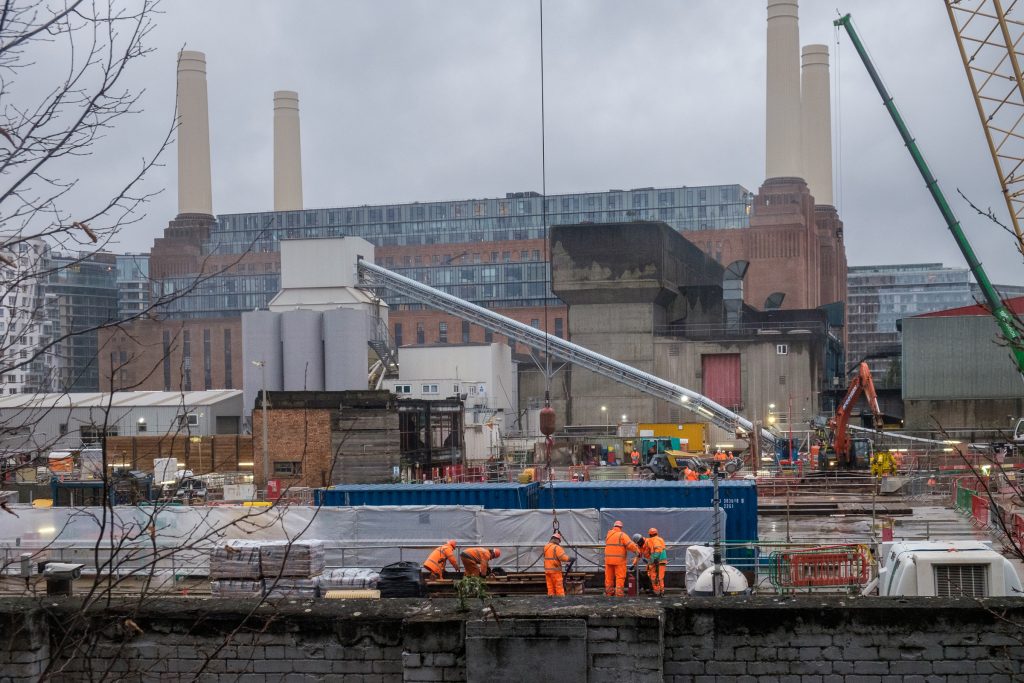
While its good that the Tate was honouring one of Britain’s finest photographers, we all found the show disappointing, both for the rather odd selection of works and prints and for some of the writing on the wall. Much of Brandt’s best work was missing, and it was hard to see why some images were included, and some prints also seemed to be of rather poor quality. Possibly this show reflects the failure of almost all British museums in the past to take collecting photography seriously – or perhaps a lack of real appreciation of photography by the Tate.
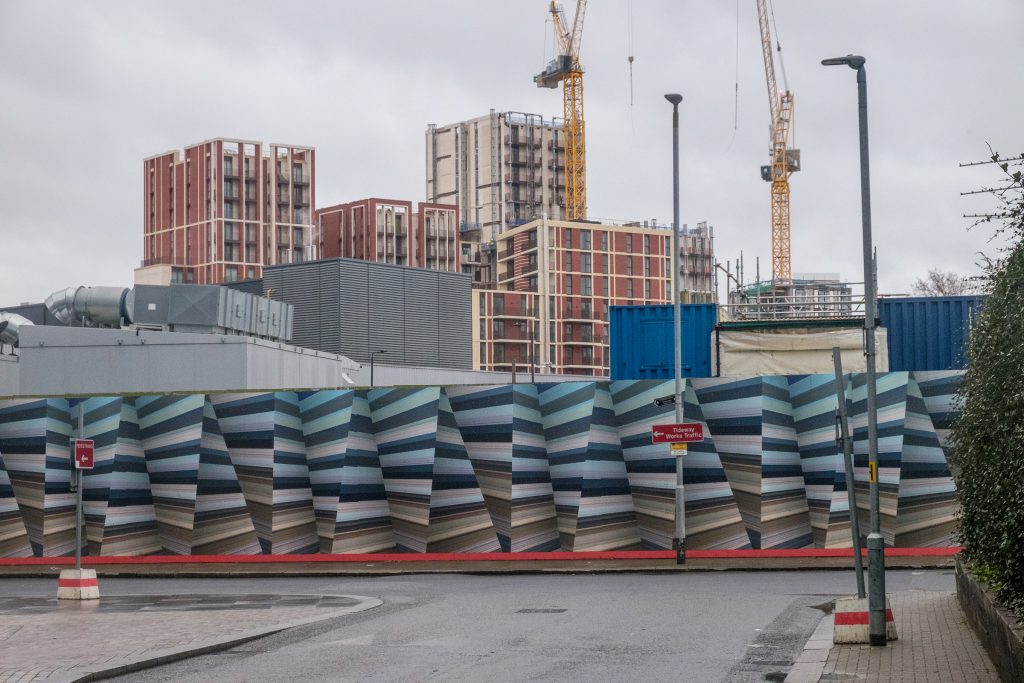
Brandt began his work in an era when photographs were seldom put on walls for anything other than illustrative purposes – there was no art market in photography. His work was largely produced for book projects and for magazine commissions, and he made prints largely for the platemakers who would prepare the plates for printing. To see the real object of his work you have to look not at the ‘original prints’ but at their reproduction in books and magazines. The strongest point in this show was the glass cases in which some of these were situated. But while we were there few of the other visitors to the show paid them more than a passing glance, instead filing reverently around the spaced out prints on the wall, pausing to pay homage at each of them before moving to the next.
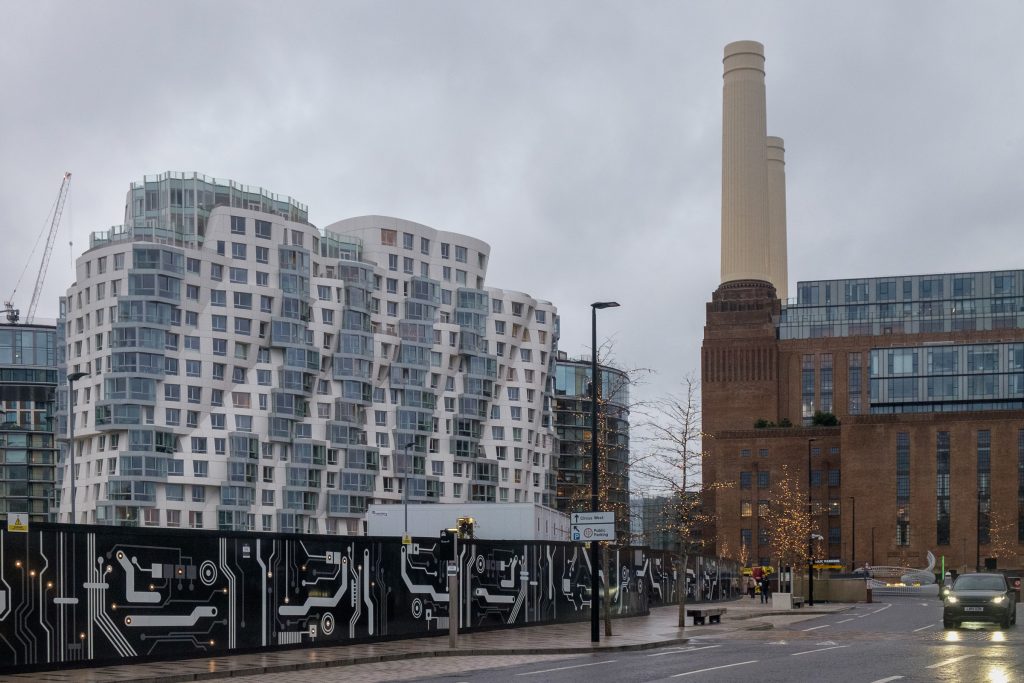
I found it a disappointing show, and if you missed it you didn’t miss much. Far better to spend your time on his 1977 book, Shadow of Light for an overall view of his work, still available second-hand at reasonable prices. And should you want to know more about the man and his influences (neither of which the Tate show concerned itself with) Paul Delany’s Bill Brandt – A Life provides more information than anyone could ever want.
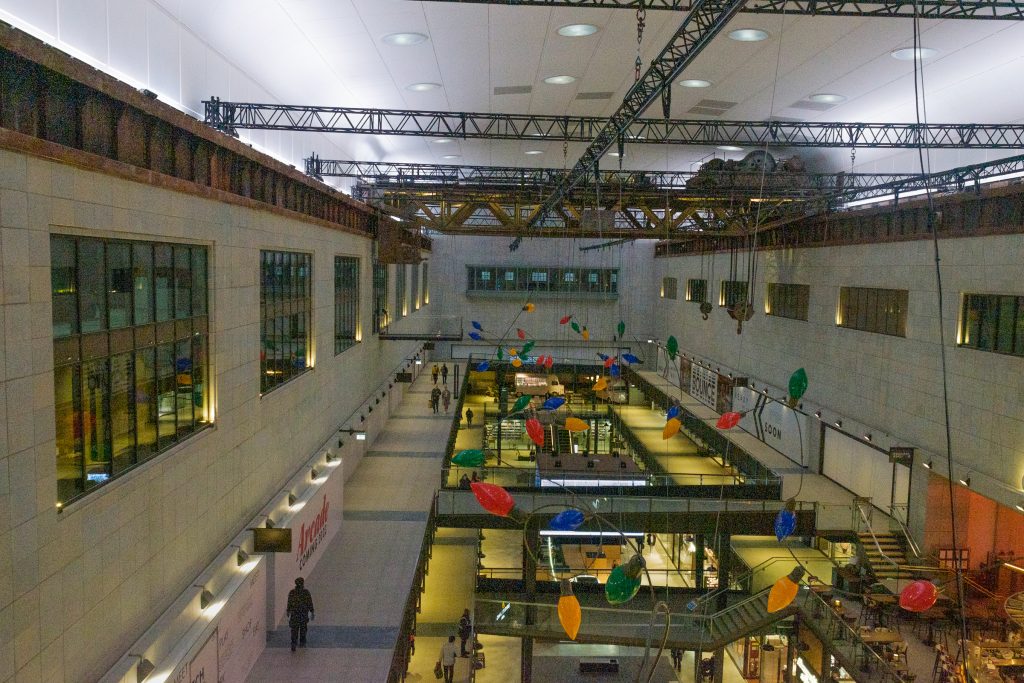
We left the gallery, crossing Atterbury Road to examine Henry Moore’s Two Piece Reclining Figure No. 1 in a small courtyard of Chelsea College Of Art and Design before proceeding to pay a courtesy visit to the Morpeth Arms which proved more to our taste than the Tate Show.
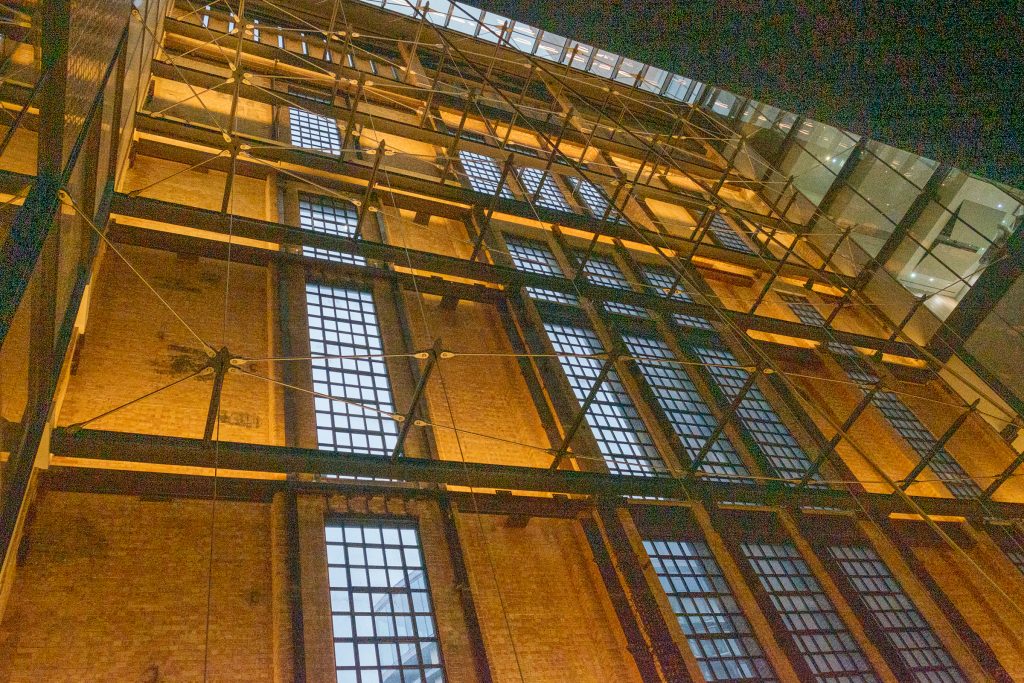
Refreshed we made our way across the river to Vauxhall to meet the Thames Path, following this upriver to Battersea Power Station. Much building work is still going on, including the construction of the Thames ‘Super Sewer’ and there is a lack of signs to show the way in the area close to the power station, but soon we found a side entrance to the recently opened interior.
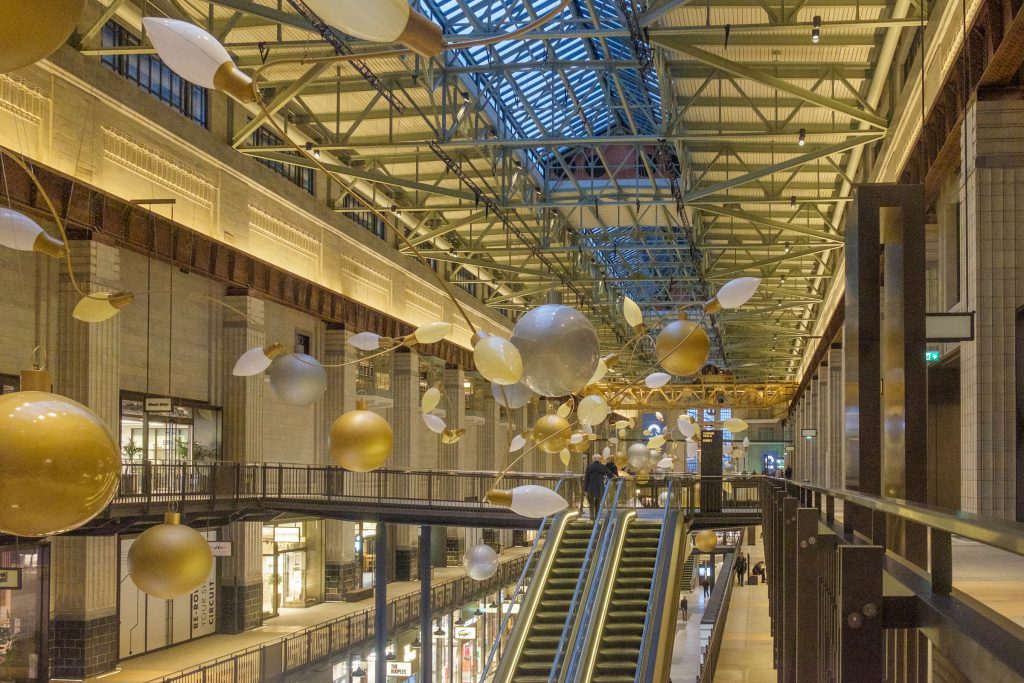
I’d visited and photographed the interior years ago when it was derelict and was interested to see what the architects had done with it. Basically it is now an upmarket shopping mall full of shops selling goods and services that might appeal to the idle rich and wealthy tourists. It also has a cinema, an expensive lift up one chimney to a viewing platform from which we have already seen countless similar views, and, perhaps the only useful thing so far as I was concerned, toilets.
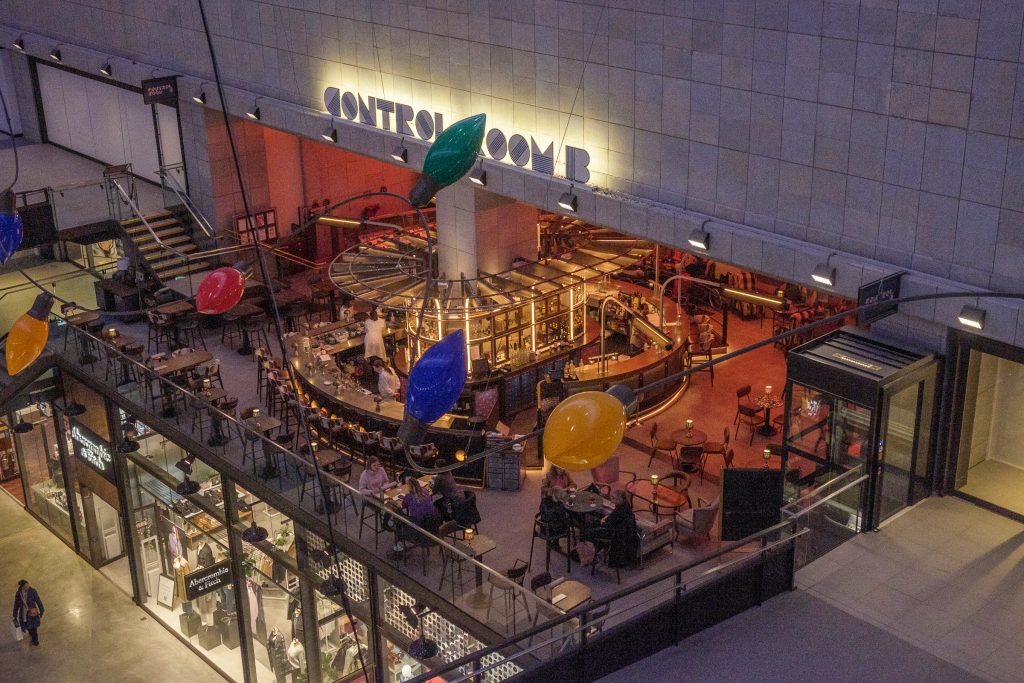
The architects have retained the huge scale of the two turbine halls, but the higher areas of them are now cluttered with huge hanging mock strings of giant fairy lamps and baubles, which failed to appeal to me. It was only at one that an uncluttered wall of windows really took me back to the atmosphere of the original.
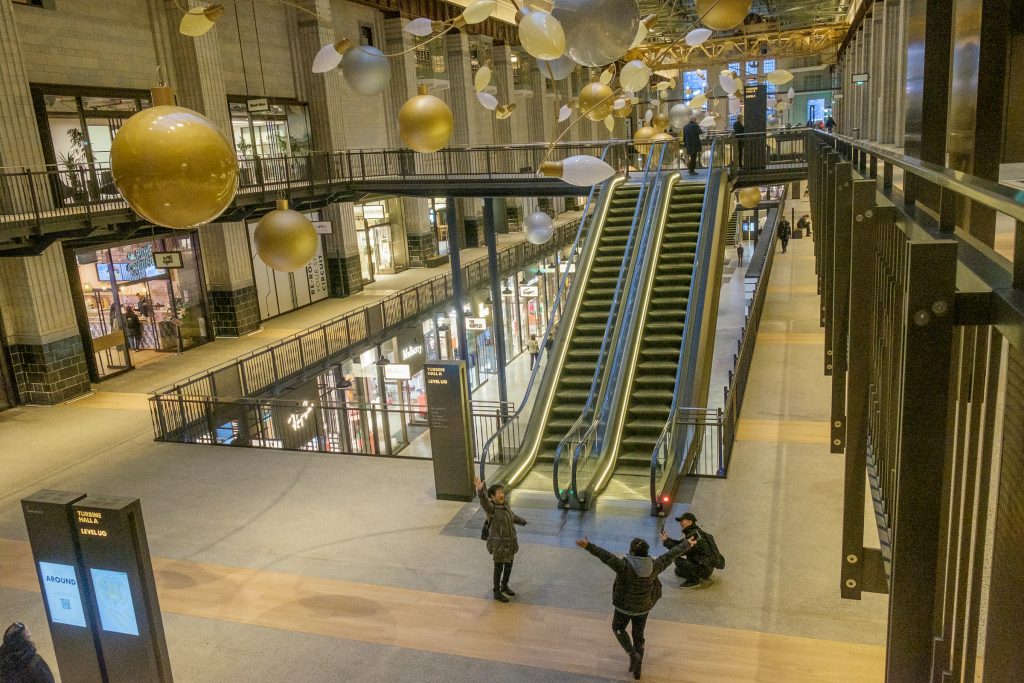
The earlier of the two turbine halls was remarkable for its art deco decorative details – the later hall plain and utilitarian. Although at least some of the deco detail has been retained (or recreated) it no longer seems to have the impact it had formerly, perhaps because do the much higher lighting levels, perhaps because of the hanging distractors. But it remains an impressive building.
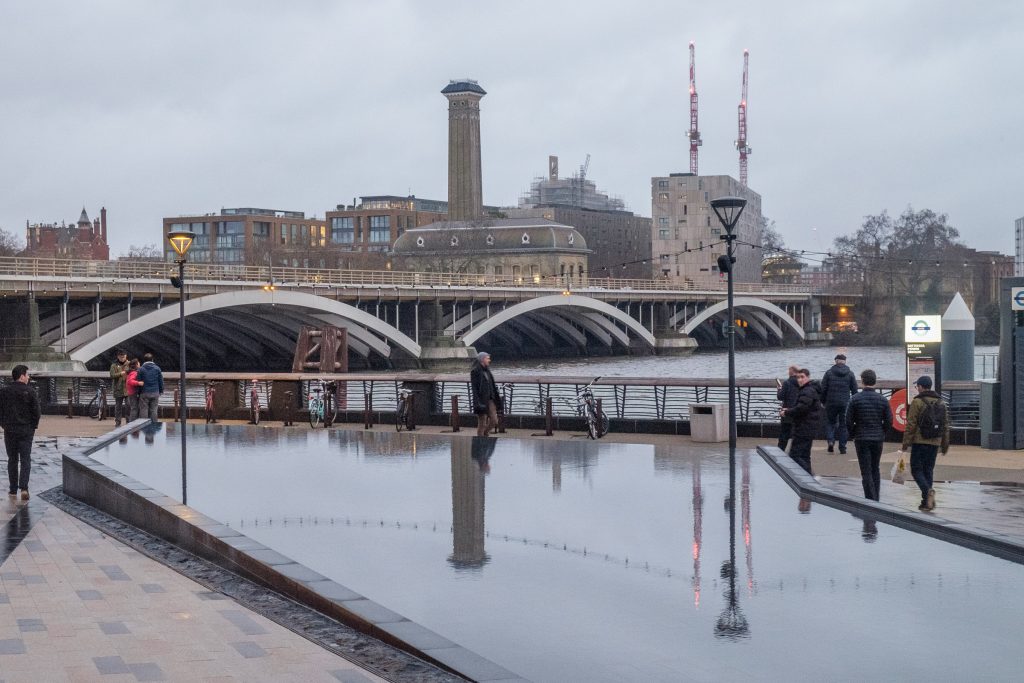
I’d left my two younger but less active companions to rush around and see the whole building, going up as high as I could while they stayed lower down. By the time we found each other again they had seen enough and were fed up with the place, and we left to the riverside terrace, walking along to catch a bus on Queenstown Road. It was dusk on a dull and damp day and we made our way to a cheap meal at a rather cosy pub in Battersea for a glass or two of wine and a remarkably cheap meal before walking to Clapham Junction for our three different trains home.














